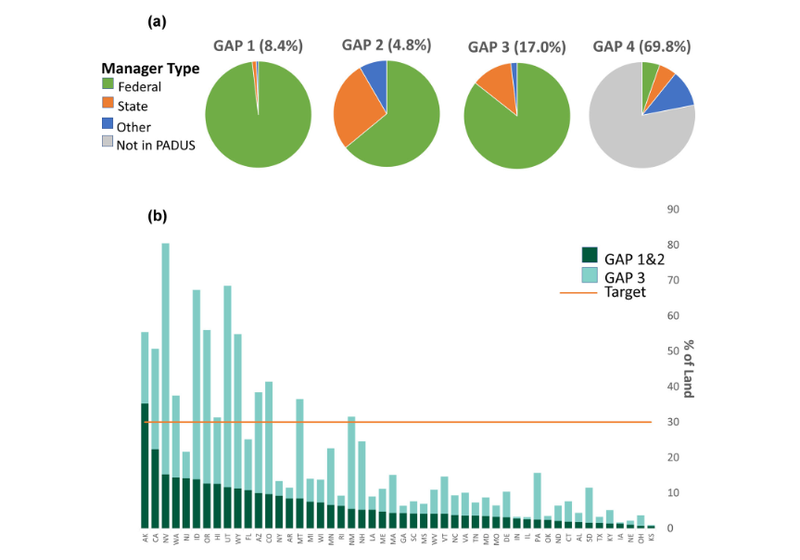

Achieving ambitious goals to conserve at least 30% of U.S. lands and waters by 2030 will require a multiscale baseline understanding of current protections, key decisionmakers, and policy tools for moving forward. To help conservationists and decisionmakers support the science-based call to address the biodiversity and climate crises, we analyze the current spatial patterns of biodiversity and carbon in the United States relative to protected areas and present a typology for classifying land contributions toward the 30x30 goals. Analyses demonstrate that 30% is achievable nationally, but spatial heterogeneity highlights the need for tailored approaches from a mix of authorities at federal, regional, and state scales. Current land protections rarely overlap with areas essential for conserving imperiled species biodiversity and mitigating climate change. One-fifth of unprotected biodiversity hotspots and over 8% carbon-rich areas face a higher risk of land conversion by 2050. In contrast, 3.6% of key biodiversity areas and 15.6% of carbon-rich areas may experience higher climate exposure. Policy considerations for making practical, substantive progress toward ecologically meaningful achievement of 30x30 goal include the need for significant investments in public and private lands conservation.